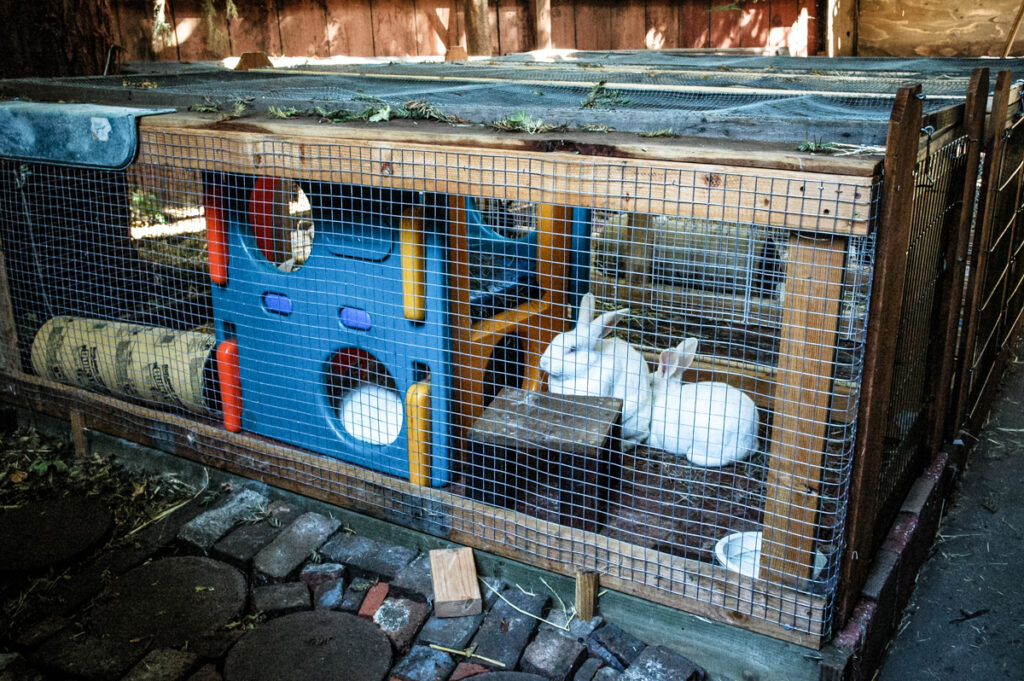Being outdoors offers rabbits the joy of fresh air, sunshine, and freedom to explore. However, it also exposes them to risks like predators, human interference, harmful plants, chemicals, and extreme weather. Rabbits are a prey species. Specifically, bunnies outdoors risk harm or death from:
- Predators
- Theft or teasing by humans
- Moldy or poisonous plants
- Toxic pesticides or fertilizers
- Exposure to sun, heat, wind, or wet
- Bacteria contained in dirt
- Diseases spread by fleas, flies, and mosquitoes
- Diseases spread by raccoon, skunk, or opossum feces
What is the greatest outdoor risk for rabbits?
The biggest danger to rabbits outdoors is predator attacks, mostly at night but sometimes during the day. Traditional hutches and cages offer insufficient protection to safely leave bunnies outside round the clock. We often hear from confused owners whose rabbits passed away overnight in seemingly secure hutches. Despite no visible harm, rabbits can sense predators like raccoons nearby, leading to panic, injury, or even death from shock. Surprisingly, raccoons can open many hutches, and they’re not the only threat—coyotes, owls, hawks, opossums, cats, and dogs also pose significant risks.
I live in the city. Do I still need to worry about predators?
Living in the city doesn’t mean your yard is safe from predators. Raccoons, for instance, navigate storm drains to invade urban spaces, capable of climbing trees and opening doors. Wire cages won’t cut it for your bunny’s protection. If keeping your bunny inside at night isn’t an option, ensure they’re secured in a space with solid walls and a sturdy door—like a garage, shed, or basement—locked tight.
My rabbit has lived outside for a long time without harm from predators—why should I bring her inside now?
Even if some rabbits manage to survive outdoors, consider the quality of their life. How deep can your bond be if your bunny is always outside while you’re in? Life in a hutch can be dull, sad, and stressful for such a sensitive animal, while the outdoor freedom they get is fraught with dangers. Domestication has stripped them of their natural survival skills. If your rabbit lives outside, we recommend bringing them indoors at night to protect against predators. Even a smaller indoor space like a bathroom or utility room is safer and starts to integrate them into your family. Transforming an “outdoor rabbit” into a “house rabbit” isn’t complicated—it can start tonight.
What kinds of safe daytime exercise can I provide outdoors?
For secure daytime play, consider an enclosed pen in your yard, complete with a top, bottom, and sides, to prevent escapes and block uninvited guests. In areas where myxomatosis is endemic, make sure you use mesh or screens on all surfaces. The “House Rabbit Handbook” (Drollery Press) offers insights on both portable and fixed runs. For additional ideas, check out our article “Four Fabulous Outdoor Exercise Set-Ups.“

